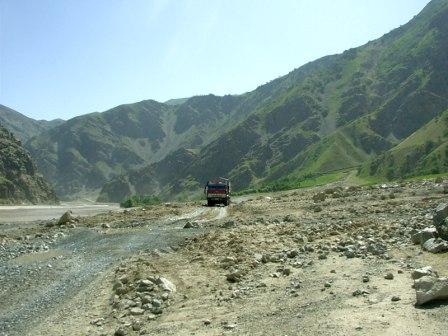Afghanistan to push for next generation wireless in 2011
The Afghanistan Telecom Regulatory Authority (ATRA) is currently in talks with the country’s four mobile carriers to gather opinion on the allocation of spectrum for next generation services. It is not yet certain whether the regulator will simply allocate spectrum to the operators or whether an auction will take place, however the aim is to have commercial 3G services in Afghanistan by the end of 2011.
November 30, 2010

Afghanistan is gearing up to begin deployment of next generation mobile technology – either 3G or 4G – as early as next year.
The Afghanistan Telecom Regulatory Authority (ATRA) is currently in talks with the country’s four mobile carriers to gather opinion on the allocation of spectrum for next generation services. It is not yet certain whether the regulator will simply allocate spectrum to the operators or whether an auction will take place, however the aim is to have commercial 3G services in Afghanistan by the end of 2011. There is believed to be some discussion as to whether it would be a better move to leapfrog 3G and go straight to 4G.
ATRA recently posted a tender for a consultant to provide technical assistance for the valuation of frequencies to be licensed to mobile operators for 3G and WiMAX. The role would include an assessment of the readiness of the Afghanistan telecom marketplace for the introduction of 3G services; and recommendations for appropriate licensing fees for 3G spectrum and for WiMAX spectrum.
At the end of September, the market’s mobile operators counted some 13.5 million subscriptions between them, equating to 44 per cent mobile penetration. The market leader is Roshan, which has four million subscribers, but there is close fought competition with Afghan Wireless, which has 3.8 million and MTN with 3.6 million. Etisalat had two million subscribers as of the end of September.
The war torn nation’s telecoms industry has come a long way since 2002, when there was no mobile service, and is now approaching 60 per cent mobile coverage. But Afghan Wireless maintains there is a clear opportunity to expand into the underserved parts of the country and reach a larger segment of the rural population.
The second placed operator recently contracted Nokia Siemens Networks to increase coverage, particularly in rural areas, and provide a range of new mobile services with enhancements to the operator’s 2.5G network, including subscriber data management and charging and billing platforms. NSN said that Afghan Wireless will also benefit from lower operational costs with the deployment of integrated packet-based transport capability that supports increased voice and data traffic on the installed base of network connections. The company will also roll out a subscriber data management solution, in order to generate insights on end-user behavior and develop services catering to the specific needs of different users.
About the Author(s)
You May Also Like











_1.jpg?width=300&auto=webp&quality=80&disable=upscale)


.png?width=800&auto=webp&quality=80&disable=upscale)